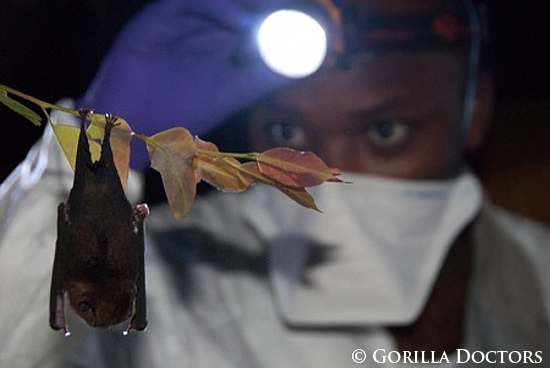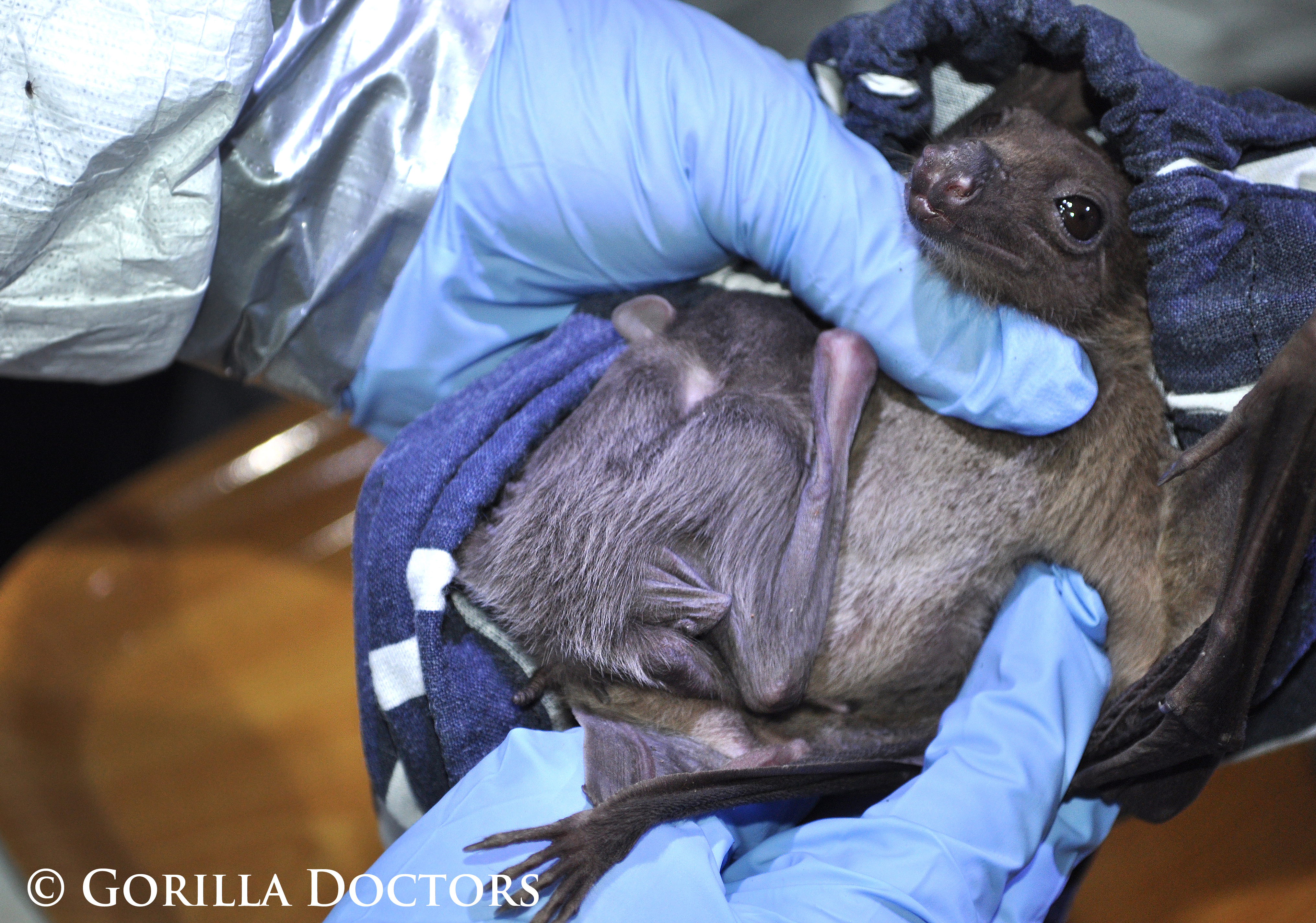Dr. Julius Studies Bat Genetics at The Field Museum of Natural History, Chicago
By Gorilla Doctors Staff on Friday, August 15th, 2014 in Blog.Dr. Julius Nziza, Gorilla Doctors Research Project Coordinator for PREDICT Rwanda, is wrapping up an interesting six-week stint in Chicago where he’s studied the genetics of bat species in Rwanda and curating techniques at The Field Museum of Natural History. Dr. Julius is working with Dr. Bruce Patterson, the MacArthur Curator of Mammals, Dr. Bill Stanley, the Head of Mammals Collections and Anna E. Goldman, Chief Mammals Preparator and Collections Assistant at The Field Museum of Natural History.
Dr. Julius with Dr. Maria Perez (Argentina -Museo Paleontologico Egidio Feruglio Museum), Michael Bartonjo (National Museum of Kenya) and Dr. Bruce Patterson (The Field Museum of Natural History).
Dr. Julius working on samples in The Field Museum of Natural History.
Dr. Julius working in The Field Museum of Natural History.
Since 2009, Dr. Julius has led our PREDICT research in Rwanda, humanely collecting samples from bats, rodents, primates and other wildlife living in areas of intense human-wildlife activity to look for emerging pandemic threats and infectious diseases.
Dr. Julius, along with PREDICT Field Veterinarian Dr. Olivier Nsengimana, has collected thousands of blood, saliva, and fecal samples from bats living in and around Rwanda’s Volcanoes National Park, Akagera National Park and Nyungwe National Park over the last five years. Bats are known carriers of many viruses including Ebola, Marburg, rabies, MERS, and SARS and as the current Ebola pandemic in West Africa rages on, we are reminded of the dire importance of wildlife disease research such as the USAID funded PREDICT program. (Stay tuned for our upcoming article on Ebola and how it could pose a threat to our gorilla patients.)
Dr. Julius traveled from Rwanda to Chicago with 70 bat carcasses and 160 muscle tissue samples, courtesy of the Rwanda Development Board Tourism and Conservation Department, who owns the samples.
The genetic research and curating work Dr. Julius is completing in Chicago is “very important. We have been collecting samples from bats without knowing the exact species we are dealing with” said Dr. Julius. “It’s important to be able to associate the pathogen with the exact species of bat as we build this international database of infectious disease.”
 Dr. Julius observes a bat outside of Volcanoes National Park, Rwanda.
Dr. Julius observes a bat outside of Volcanoes National Park, Rwanda.
 A bat captured for sample collection for PREDICT research.
A bat captured for sample collection for PREDICT research.
This is the third time Dr. Julius has visited the United States. In 2009, he attended an 8-week ENVIROVET Summer Course on aquatic and terrestrial ecosystem health through the University of Illinois and the White Oak Conservation Center in Florida. He returned to the US to complete a Safe Capture Course, focusing on safe capture techniques of primates and also attended the annual AAZV conference in 2011.
“The work I am doing in Chicago is intriguing and important, but I’ve also enjoyed seeing the city and visiting the John Shedd Aquarium, the Navy Pier, Hyde Park and lots of museums” said Dr. Julius. “ It’s a beautiful city with lots of interesting history… I’m particularly fascinated with how the city layout was designed and it’s true what they say, it is a ‘windy city’!”
Dr. Julius will return to Rwanda on August 25th when he will begin wrapping up phase 1 of the PREDICT project for Rwanda and continue completing his Master of Science degree in International Infectious Disease Management from Uganda’s Makerere University.
For more about the Gorilla Doctors PREDICT project in Rwanda and Uganda, click here.


 Donate
Donate